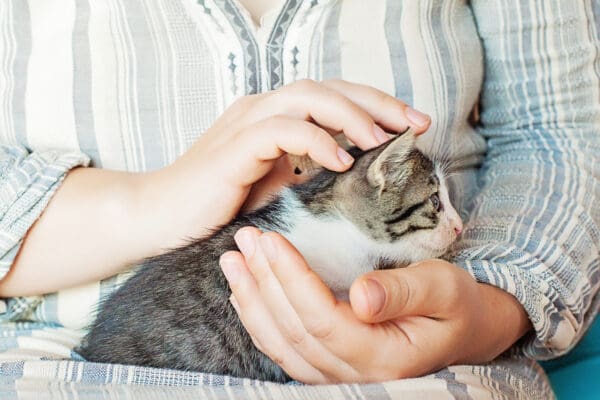
11401 NE 195th St. Bothell, WA 98011
(425) 486-9000 PHONE (425) 486-9002 fax
Rabbits, like all animals, are susceptible to a variety of bacterial, viral, fungal, metabolic, and neoplastic diseases. However, unlike other domestic animals (dogs, cats, cows, horses, etc.), rabbits are very skilled at hiding signs of illness. Although they live in our homes and are tame, rabbits still have the “prey instincts” of wild animals; as a result, they will do everything they can to pretend they are healthy even if they are feeling sick. Rabbits will often not show any signs of disease until they are so weak that they cannot hide their symptoms any longer. As a result, all rabbit owners need to be vigilant to watch for subtle changes in their pets’ normal activity level, appetite, and behavior that may signal illness.
So how will you know if your rabbit is ill? Start by observing and making a mental note of your healthy rabbit’s normal behavior and habits. Once you know normal, it will be easier to spot abnormal.
Behavior: This will probably give you your first hint that something is not right. A normal rabbit is active and curious in its surroundings. If it sits with its body hunched, appears sleepy for extended periods of time, or huddles/trembles despite a normal, warm environment, it is likely feeling pain, discomfort or general malaise. A rabbit grinding its teeth is a reliable indicator of pain. A sick rabbit is usually quieter than normal, not interested in food or treats, and often retracts from petting or attention. It is these changes in behavior and patterns that suggest something is wrong.
Droppings: A normal rabbit dropping is round, firm, and almost odorless. The color should be consistently dark brown, with no liquid component. Black, green or tan stools are all signs of disease, as are stools that have poor or no form to them. A lack of solid consistency to the feces is true diarrhea, and diarrhea is a serious condition in a rabbit and should not be taken lightly. One or two abnormal droppings are usually nothing to worry about, but consistently abnormal droppings over an entire day or two would warrant a call to the vet. Blood in the droppings is always abnormal.
Urine: Urine can vary in color and density, can range from clear to dark yellow, and may be cloudy. Red urine can be caused by porphyrin pigment (normal) or blood, and can be related to diet or a sign of disease. The amount of clear urine may increase with high fluid intake or as a result of disease. Kidney disease can produce either increased or decreased urine production, and can increase or decrease water intake.
Appetite: Most rabbits will lose their appetite when they become seriously ill, but even a small decrease in appetite should be taken as a potential sign of disease. Some ill rabbits will stop eating their regular diet and eat only one food item or treats. Other rabbits will stop eating and drinking altogether. Occasionally a rabbit will drink a lot but not eat. Any of these symptoms could be a sign of serious disease.
Body condition: Pick up rabbit and run your finger down the center of the backbone. You should be able to feel the spine running from neck to tail. A healthy rabbit should have muscle on either side of the bone. A rabbit that has lost weight will have a very “pointy” spine, prominent shoulder blades and hips, or even small points immediately to each side of the point of the spine. Feel your healthy rabbit so you will know how normal feels and will be able to recognize abnormal when it occurs. Weight loss can be significant in rabbits in a very short amount of time, and is a sure sign that something is wrong.
Although it can be difficult to identify the early signs of disease in your rabbit, it is essential to note changes in their behavior, attitude and physical condition as early as possible to prevent serious disease from becoming life-threatening.
March 30, 2015
Content of this Care Sheet Courtesy of:
The Center for Bird and Exotic Animal Medicine
11401 NE 195th St. Bothell, WA 98011
(425) 486-9000 PHONE (425) 486-9002 fax



